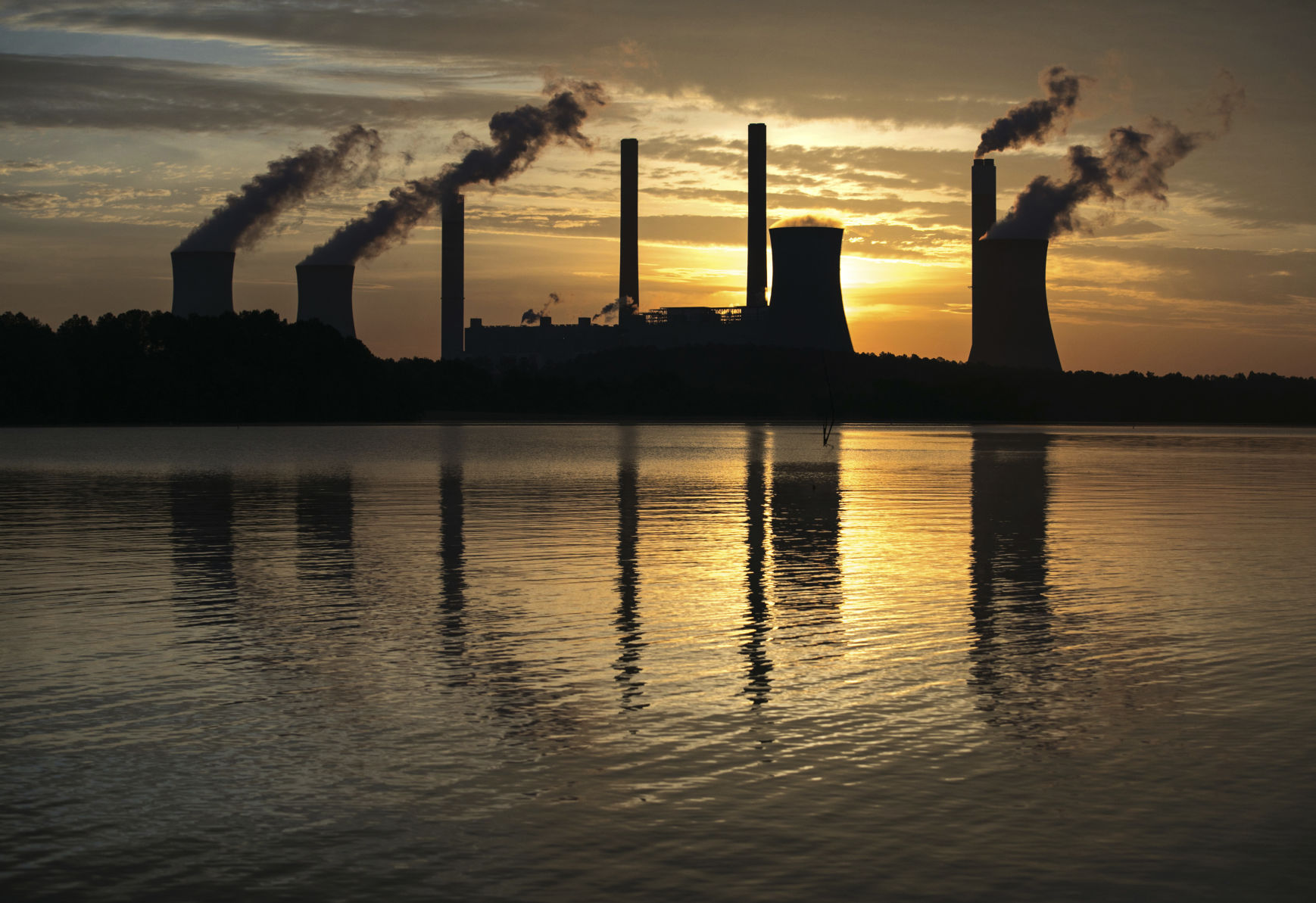MORGANTOWN, W.Va. (AP) — Technology now in limited use removes about 90 percent of carbon dioxide from the smokestacks of coal-fired power plants, but energy experts say cost remains the chief obstacle to bringing the “clean coal” touted by President
MORGANTOWN, W.Va. (AP) — Technology now in limited use removes about 90 percent of carbon dioxide from the smokestacks of coal-fired power plants, but energy experts say cost remains the chief obstacle to bringing the “clean coal” touted by President Donald Trump into the mainstream.
They cite recent advances in applying the longstanding technology, despite some earlier setbacks, but say the U.S. power sector needs bigger tax credits or other incentives to close the cost gap for using them.
“What we have now is a public policy challenge, or call it a political challenge if you will, in that next phase which is to deploy this technology more widely and bring the cost down, (which) requires a whole new set of policies that go beyond R&D to actual deployment incentives,” said Brad Crabtree, vice president for fossil fuels at the Great Plains Institute.
The U.S. has successfully cut other smokestack pollutants, including sulfur, nitrogen and mercury. But carbon dioxide is a bigger challenge because there is so much of it. Coal- and gas-fired electrical generators produce about 30 percent of CO2 from human activity. Other industries like cement, steel and fertilizer manufacturing add another 20 to 25 percent. Farming and vehicles are also major contributors.
John Thompson of the nonprofit Clean Air Task Force said there would be no way to limit the rise in global temperatures to 2 degrees Celsius (3.6 degrees Fahrenheit) above pre-industrial levels without taming carbon emissions. The world has already warmed about 1.1 degrees Celsius (2 degrees Fahrenheit) since the Industrial Revolution. Scientists say every fraction of a degree change in average temperatures can lead to noticeable swings in local weather patterns.
“If you don’t tackle that you really can’t constrain warming on the planet to one-and-a-half to two degrees on anybody’s likely scenarios,” he said.
In Congress, bills that now have 64 bipartisan sponsors would raise carbon-capture tax credits from $10 or $20 per metric ton depending on use to $35 or $50. Advocates want it added to the current tax overhaul proposal.
Sen. Shelley Moore Capito, a West Virginia Republican and co-sponsor, said carbon capture would help protect the coal industry and expand oil production as well as reduce emissions. As for chances of passage, she said Thursday that it’s “too early in the process to know whether those priorities can advance together or separately.”
The Natural Resources Defense Council, like other environmental groups, first advocates efficient energy use and switching to renewable sources, but regards carbon capture as “a potentially useful tool in the climate protection toolbox,” said David Hawkins, director of climate programs.
At federal labs in Morgantown and Pittsburgh, researchers cite one recently successful 13-megawatt pilot project in Colorado and say they are on target for a handful of others by 2020 while reducing the cost of carbon capture from $100 per metric ton to $40. “We’re definitely close,” said Lynn Brickett, the labs’ carbon capture technology manager.
The labs are also identifying methods to inject more liquefied carbon dioxide back into the Earth. That’s where the carbon-based coal, oil and natural gas originally came from before they were burned and produced the CO2 in the atmosphere blamed for global warming.
New energy technologies normally take 15 years to move from the laboratory to the outside world, according to the National Energy Technology Laboratory. Its researchers are developing computer models to accelerate that timeline for carbon, engineer David Miller said.
The lab, a division of the U.S. Energy Department, acknowledges routine use would be at least another decade away and historically such advances have taken 20 to 30 years. Meanwhile, more U.S. coal-fired power plants are scheduled to close.
In June, Mississippi Power Co. suspended special carbon-capture efforts at its 582-megawatt Mississippi power plant that first turned coal into gas, which cost more than $7 billion to build, more than double the planned cost. Once regarded as a possible model for “clean coal,” it now burns natural gas.
The Petra Nova project outside Houston used a $190 million federal grant toward installing a $1 billion system to capture CO2 from an existing 600-megawatt coal-fired power plant, piping it to a Texas oil field and pumping it underground to boost oil production. Operating since late December, the system is currently “breaking even,” NRG Energy spokesman David Knox said.
“We’re very interested in the technology, but until the economics work, we’re not committed to a second one,” Knox said.
With underground carbon storage, research began 20 years ago and builds on the practices of the petroleum industry, which uses carbon dioxide to drive more oil from the ground, said Traci Rodosta, the lab’s carbon storage technology manager. NETL has regional partnerships across 43 states, small-scale projects that began in 2005 and larger-scale field projects in 2008.
There are ongoing efforts in 30 countries. A Norwegian reservoir under the North Sea has injected more than 16 million metric tons of CO2, Rodosta said. Lab scientists say there have been no major incidents with leaking or seismic activity.


